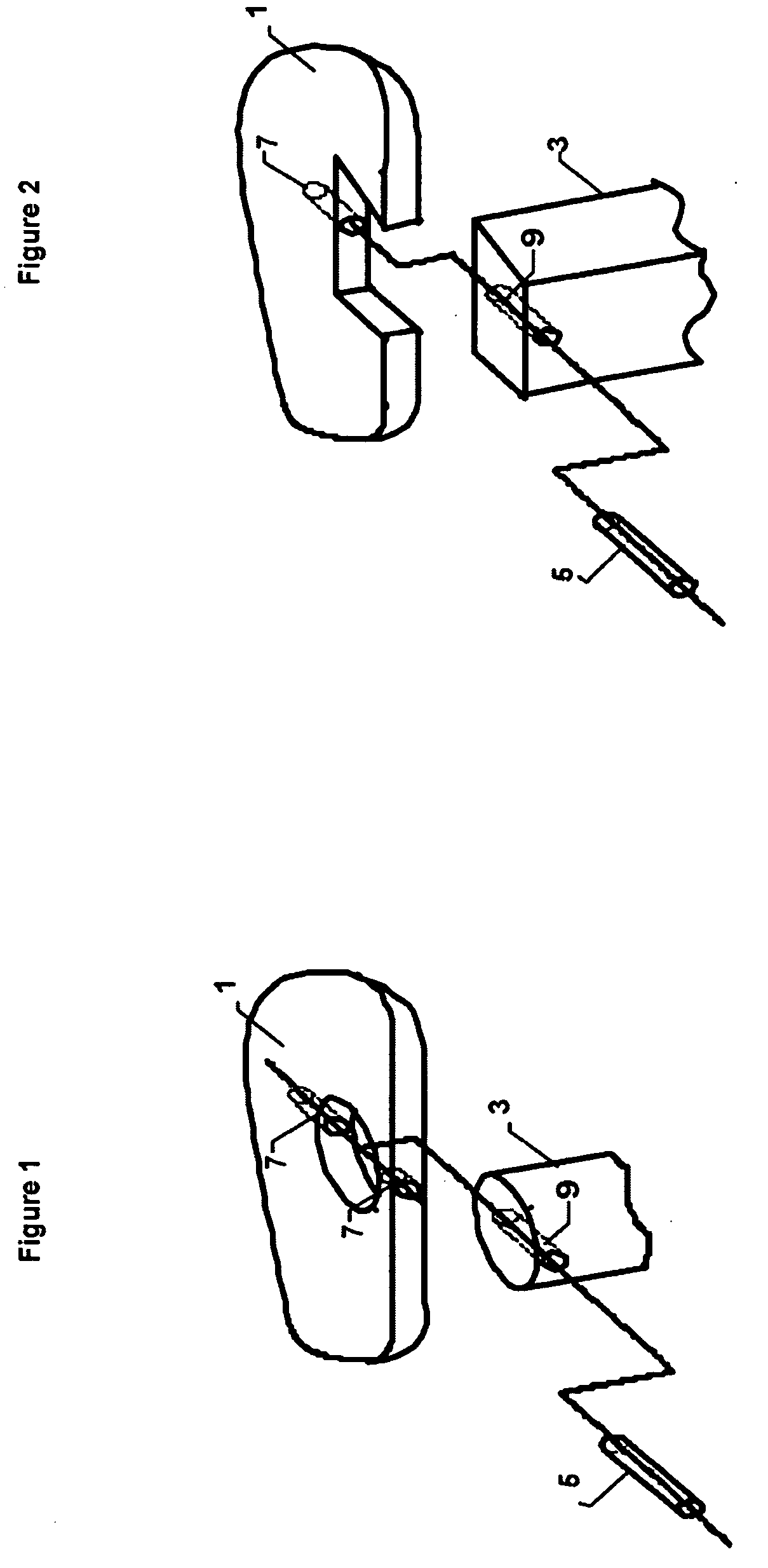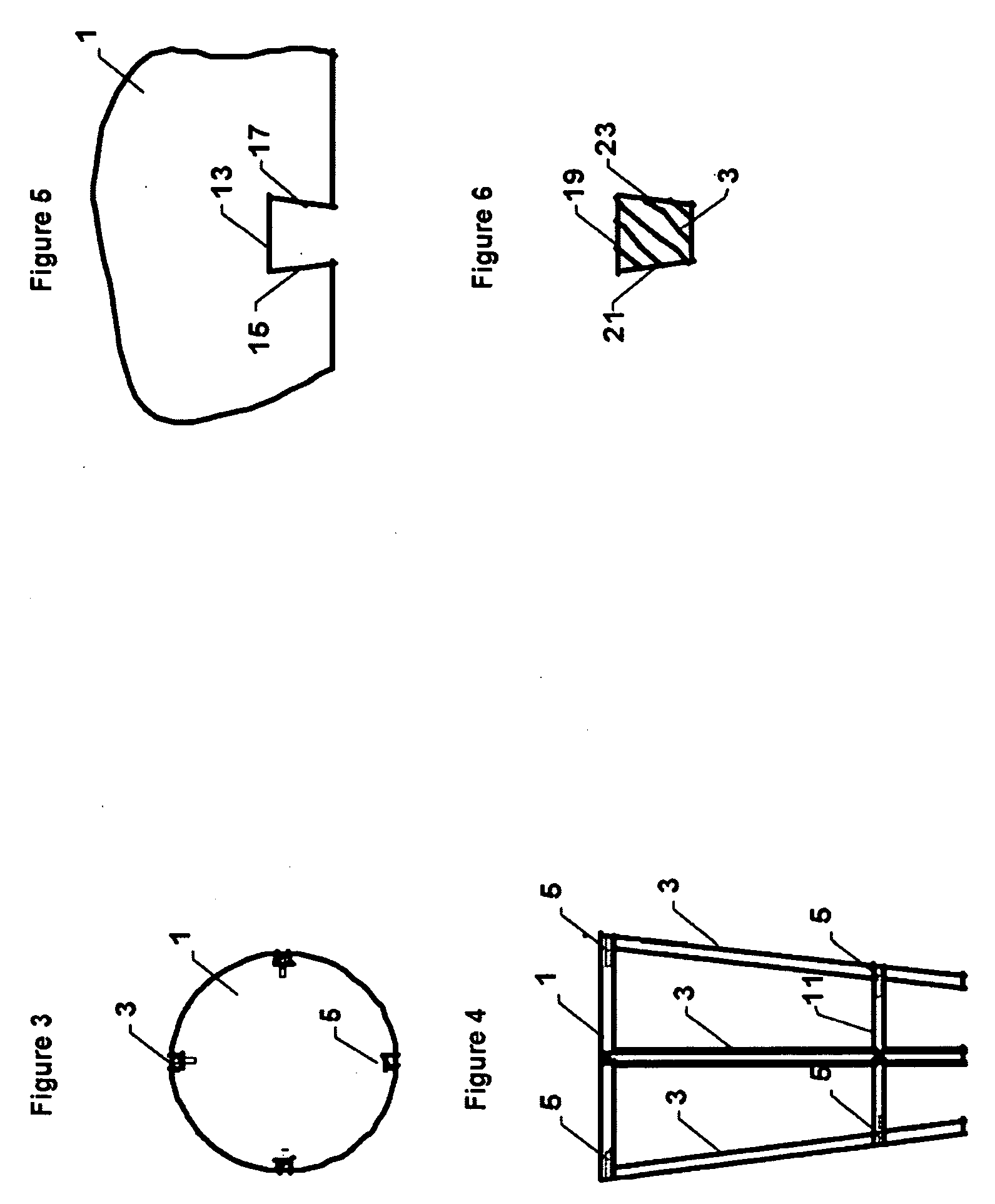Pinned Lock Joint
a technology of pin lock and pin joint, which is applied in the direction of rod connection, pipe, fastening means, etc., can solve the problems of assembling components, failure of joints, cost of product shipping to the end user,
- Summary
- Abstract
- Description
- Claims
- Application Information
AI Technical Summary
Benefits of technology
Problems solved by technology
Method used
Image
Examples
Embodiment Construction
[0018]One embodiment of the joint is shown in FIGS. 1, through 5 wherein the joint is used in eight places to connect four table legs to a table top and a table shelf. Each joint in made up of 3 members, the top (1), or shelf (7), the leg (3), and the pin (5), Each individual member is constructed to mate with the other two members in an intimate manner.
[0019]In this embodiment the top member is made from wood and is 24 inches in diameter, and ¾ inches in diameter, although neither of these features is essential to the implementation of this design. The top only needs have features large enough to completely surround the mating leg (FIG. 2), be amenable to precision forming or machining, and be of sufficient strength for the anticipated application. Into the top and at an angle of 10 degrees (9) to the face of the top 4 dovetail slots (FIG. 2 and FIG. 5) are machined immediately adjacent to edge and through the top at 90 degree intervals around the top. The 10 degree angle (9) is on...
PUM
 Login to View More
Login to View More Abstract
Description
Claims
Application Information
 Login to View More
Login to View More - R&D
- Intellectual Property
- Life Sciences
- Materials
- Tech Scout
- Unparalleled Data Quality
- Higher Quality Content
- 60% Fewer Hallucinations
Browse by: Latest US Patents, China's latest patents, Technical Efficacy Thesaurus, Application Domain, Technology Topic, Popular Technical Reports.
© 2025 PatSnap. All rights reserved.Legal|Privacy policy|Modern Slavery Act Transparency Statement|Sitemap|About US| Contact US: help@patsnap.com



